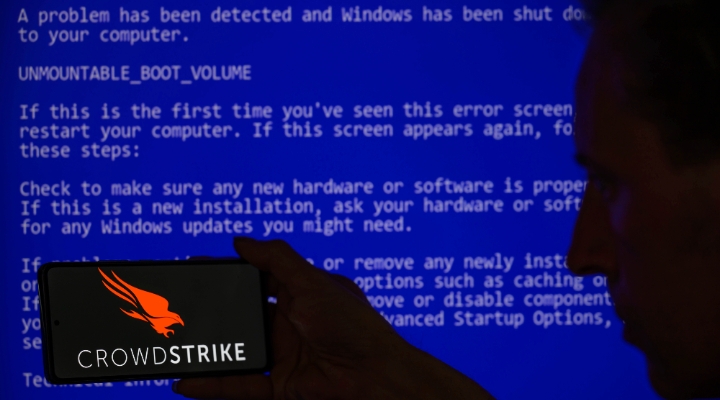Earlier this week, we talked about the top mutual funds to hold in a retirement portfolio. Today, we look at exchange traded funds (ETFs).
Investors should approach planning for their retirement the same way they would for a long road trip. Anyone who has driven a vast distance knows that choosing the vehicle that will get you where you need to go is a critical decision. A convertible may be the sexy choice, but chances are it isn't as practical as an SUV.
Younger investors who have a long time-horizons should prioritize investing in funds that will provide steady capital appreciation, while for investors who are closer to (or perhaps already in) retirement, always think safety first.
Cost is also a significant factor; younger investors who are starting out by investing small amounts can consider the efficiency of their choice so that their costs don't eat into the spending they plan to do when they reach their destination. As such, it's worth examining whether they would be well-served by using low-cost ETFs as their vehicle of choice.
For those who prefer to be the ones doing the steering, building a best-of-breed portfolio can have its benefits, but will also require vigilance.
A portfolio should be diversified and its success should not rest with one single region -- therefore investing globally makes sense. Also, a longer-time horizon allows for an investor (if they are willing) to take on slightly more volatility, so some small- and mid-cap exposure might also be of benefit. For those of us who prefer that someone else takes the wheel, allowing them to enjoy the scenery, a balanced fund makes sense.
Now that we know what we're looking for, here are some ETFs worth considering as the core of your portfolio for the long-term that will, in our opinion, be your best bet to get to your destination.
Note: For the ETFs, investors who are contributing on a monthly basis or at other regular intervals should ensure their brokers are not charging them with commissions every time they add to their investment, as in that case the lower price of the ETF would be more than offset by trading costs.
Global Equity
iShares MSCI World (XWD)
With a management-expense ratio (MER) of just 0.46%, this ETF allows younger investors a very affordable way to start off investing in the global economy. Stocks are not weighted by how well they're expected to do but rather by their market capitalization, or how big the stock is. Low costs aside, the biggest benefit of choosing an ETF is that you'll never have to worry about trailing the market, making it easy to take a hands-off approach.
A drawback of a global equity ETF is that the manager’s stock selection will drive your regional exposures, and even though we live in an increasingly globalized world, that can still lead to meaningful underweights to major regions like the US market when valuations get out of sync across countries. A solution is to pick a few core building blocks with a regional focus and rebalancing on a regular basis to ensure your asset mix doesn’t stray from your desired weights. Below you’ll find a few options in each asset class that are worth considering as long-term holdings in your portfolio:
US Equity
Vanguard S&P 500 ETF (VFV)
BMO S&P 500 ETF (ZSP)
iShares Core S&P 500 ETF (XUS)
All these ETFs seek to replicate the performance of the S&P 500. They are all priced 0.01% apart, starting with the Vanguard offering at 0.08%, BMO at 0.09% and ending with the iShares offering coming in at 0.10%. All three firms offer a hedged version too, for those that don’t want to take on any currency risk.
International Equity
iShares Core MSCI EAFE IMI (XEF) (XFH)
Vanguard FTSE Developed Markets ex-North America (VDU) (VEF)
These ETFs are options for investors who would rather opt for passive, low-cost alternatives. They provide exposure to large- and mid-cap stocks domiciled in developed Europe, Asia and Australia. The iShares and Vanguard offerings attempt to track the MSCI EAFE and FTSE Developed Markets (ex-North America) indices, respectively.
Modelled after those benchmarks, stocks are not weighted by how well they're expected to do but rather by their market capitalization, or how big the stock is. Over half of their allocations are in Greater Europe (including the United Kingdom) along with a significant stake in Japan -- a country that has been traditionally hard for active managers to find stocks in due to various challenges such as shareholder transparency and massive government intervention in the financial markets.
Both ETFs were launched in 2013 and therefore have relatively short track records, but so far the iShares has done a better job of tracking the index. This is likely partly because the Vanguard ETF, with an MER of 0.26%, is slightly costlier than its iShares counterpart, which charges 0.22%. Both offerings come in hedged and unhedged form.
Balanced
Vanguard Asset Allocation ETFs
The firm that pioneered passive investing also offers low cost (0.22%) balanced funds, ranging from conservative to aggressive. For investors who prefer to invest passively but don’t have the time to do their own asset allocation, the Vanguard offerings are an excellent one-stop solution.







:quality(80)/cloudfront-us-east-1.images.arcpublishing.com/morningstar/347BSP2KJNBCLKVD7DGXSFLDLU.jpg)












